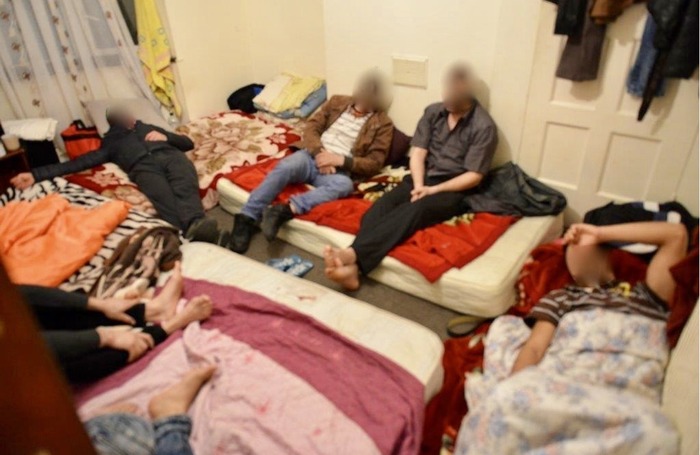The construction industry is recognised as one of the key sectors in the UK where modern slavery and labour exploitation is taking place, says the Gangmasters and Labour Abuse Authority (GLAA), which has become the foremost investigative agency for such activity.
The industry’s appetite for cut-price contractors and sub-contractors and the opening up of EU free-movement of workers policy to eastern Europe have led to vulnerable, transient job seekers being intimidated and exploited at work and often trapped in cramped and unsanitary accommodation over which they have no control.

Construction organisations, including the RIBA, have made great strides in raising the profile of the scourge of modern slavery among their members since the passing of the UK’s Modern Slavery Act (MSA) three years ago. Last year the RIBA became a signatory to the GLAA Construction Protocol.
Any business within construction can sign up to the protocol, which requires a commitment to share information to stop or prevent exploitative behaviour and a pledge to raise awareness through supply chains.
The MSA introduced reporting requirements for large companies (turnover of £36m or more) to report annually on the steps they are taking to ensure they have no links to modern slavery in any of their activities. But while the vast majority of architects’ practices fall below the threshold, it is becoming increasingly common for practices to publish their own anti-slavery policies as part of their wider ethical policies.
The RIBA is planning new guidance for practices on modern slavery, but already encourages all Chartered Practices to drive forward ethics, professionalism and sustainability. Examples of what practices can do are set out in the July 2017 RIBA guidance document ‘United Nations Sustainable Development Goals in Practice’, which includes developing and promoting a human rights due diligence strategy alongside a slavery and human trafficking statement.
In its latest assessment of ‘The Nature and Scale of Labour Exploitation’, the GLAA says the scale of modern slavery in the UK continues to increase. In 2017, the number of potential victims formally submitted to the National Referral Mechanism was over 5,000, a 35% increase on the previous year. These figures are assumed to grossly underestimate the real scale of the problem.
In construction, convoluted supply chains and the industry’s reliance on pseudo self-employment for manual workers makes identifying exploitation challenging. Migrant workers in particular may not understand that they are being deceived over their employment rights.
The impact that Brexit will have on labour exploitation is unknown. The recent decline in the number of Polish workers in the UK is well documented, but the number of Romanians and Bulgarians has continued to rise and the total number of workers from other EU countries increased overall last year. The main worker countries of origin for construction workers have been Poland, Romania, Bulgaria and Lithuania, but the GLAA has identified 17 non-UK nationalities in total.
The GLAA fears that any new EU-worker restrictions that might be introduced next year could lead to a drop in intelligence flow and reporting as workers seek to drop below the radar of law enforcement and immigration authorities.
The GLAA has produced a guide to spotting the signs of labour exploitation on construction sites that architects can look out for, grouped within key indicator areas: restricted freedom, behaviour, working conditions, finances and appearance.
Architects who suspect possible modern slavery or labour exploitation are urged to report their concerns to the GLAA intelligence team, by emailing intelligence@glaa.gsi.gov.uk or by calling 0800 432 0804
Text by Neal Morris. This is a Professional Feature edited by the RIBA Practice team. Send us your feedback and ideas
RIBA Core Curriculum Topic: Architecture for social purpose.
As part of the flexible RIBA CPD programme, Professional Features count as microlearning. See further information on the updated RIBA CPD Core Curriculum and on fulfilling your CPD requirements as an RIBA Chartered Member.
Posted on 16 August 2018.









